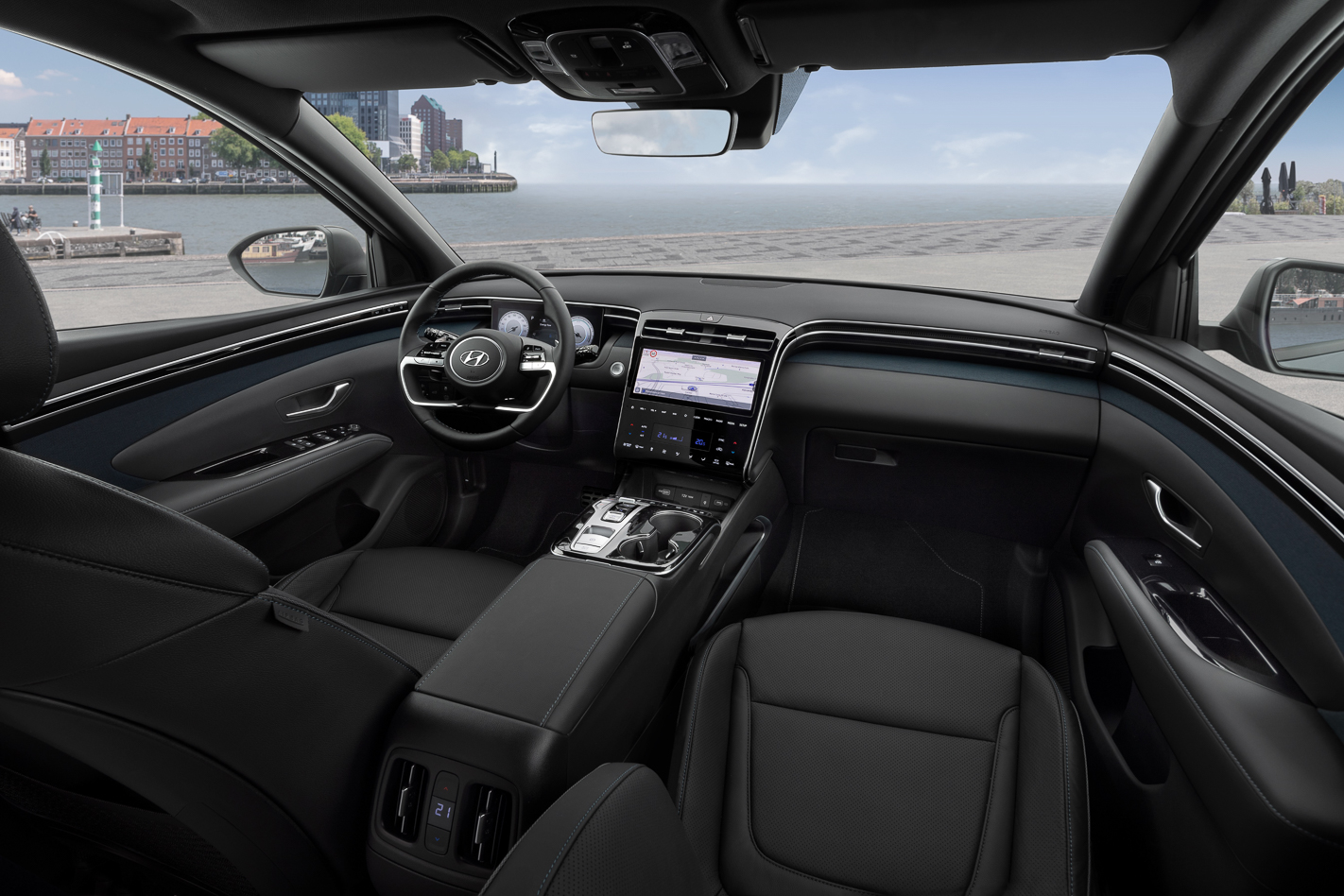The Hyundai Tucson has been doing a great job of ushering in a new styling direction for the South Korean giant, with most in favour of its bold, angular aesthetic.
Look beyond the fresh panelwork, however, and those of us who believe that form should follow function keep returning to the same question.
What’s the fastest Tucson that will be offered? More to the point, will there be a Tucson N?
It may not have escaped your attention that a Korean website called Autospy published the following image, which it claimed was an internal Hyundai document that details plans for both a Tucson N line and a full-fat Tucson N.

Translated into metric measures, that’s 171kW for the Tucson 1.6T hybrid and 216kW for the N proper. These figures would seem to tally with the stated power output of the forthcoming 1.6-litre (171kw/348Nm) and, given that the Tucson is already getting a 2.5-litre four-cylinder engine, the N’s figure isn’t far off the 213kW turbo four that’s headed for the Sonata N line.
Small problem, though. It’s not enough power. The boss of Hyundai’s N division, Albert Biermann, has made no secret of his desire to develop high-performance SUVs, and the Tucson, in particular, has been on his radar for a very long time.
This from 2018: “If you look at the Tucson today it is very relaxed, very comfortable to drive, but to have an N version requires a lot of power, nice transmission, nice handling, sportier tyres and lowered body,” he said. “The cars are out there and we can have a very good business with SUVs. We have a good platform with the Tucson to make a high-performance SUV.”
But in order to wear the N badge, it can’t just be a mats, flaps and sticker pack job. It needs to completely change our perception of Hyundai’s place in the pecking order.
Simply putting a Sonata N line engine into a heavier vehicle and badging that an N appears to make little sense from a brand management perspective.

And the Tucson will be quite a sizeable thing when it arrives in Australia, as we’re only getting the long-wheelbase body that adds 75mm between the axles and 130mm to the length. That will likely mean a kerb weight in the region of 1750kg, which would translates to a 123kW/tonne power to weight ratio, given a 216kW powerplant.
An Audi SQ5 develops 134kW/tonne and even a BMW X3 M40i is good for 141kW/tonne. Just for some measure of perspective, an X3 M proper is a whopping 190kW/tonne. Obviously price plays a part in assessing the relative value propositions here, but will Hyundai be content to go straight to the bottom of the class with its game-changing flagship performance SUV?
MOTOR asked Hyundai’s Head of Global Product Management, Lorenz Glaab about the prospects of a hot NX4 Tucson and, again, he wasn’t denying the company was interested.
“When we talk about N actually, this is a very exciting story and it’s also very close to our heart. I know that Australia is very fond of racing and high performance models and so are we, so we will keep on building our N models and our N story and we will not only keep the current story alive but our objective is to build up on that,” he said when asked about Tucson N.
“So the N model, if we talk about the strategy and the logic a little bit. The N model is about an increase in substance, an increase in performance and really make it race track capable. N line, per se, is about design. It’s about adding some features, accent colours, spoilers, metal pedals and such like. So N line is of the design side and N model really is about performance and additional substance. That is our direction going forward.”
This seems a change for Australia, given that the N line version of the i30 we’re used to is a semi-hot 150kW hatch, positioning N line as N-lite, if you will. Clearly that’s not going to be the case henceforth. N line is the optic pack. But what of a Tucson N proper? Here Glaab was keen to keep his options open.

“Nothing is impossible and we monitor the situation very closely. If we feel that it should make sense, that the appetite is there in a segment to have an offering, then we are able to move pretty fast,” he confirmed.
So there you have it. If there’s sufficient demand, it’ll be built and brought to market rapidly, suggesting the hard yards of chassis development and electronics calibration have been done already.
And, as Glaab hinted, there’s demand in Australia, at the very least, and it’s hard to see significant markets like the US, the UK and Germany turning their noses up at a hot Tucson.
That’s about as close to a green light as you’ll get from a senior executive without laying all the cards on the table. Now, about that vexed issue of power…






